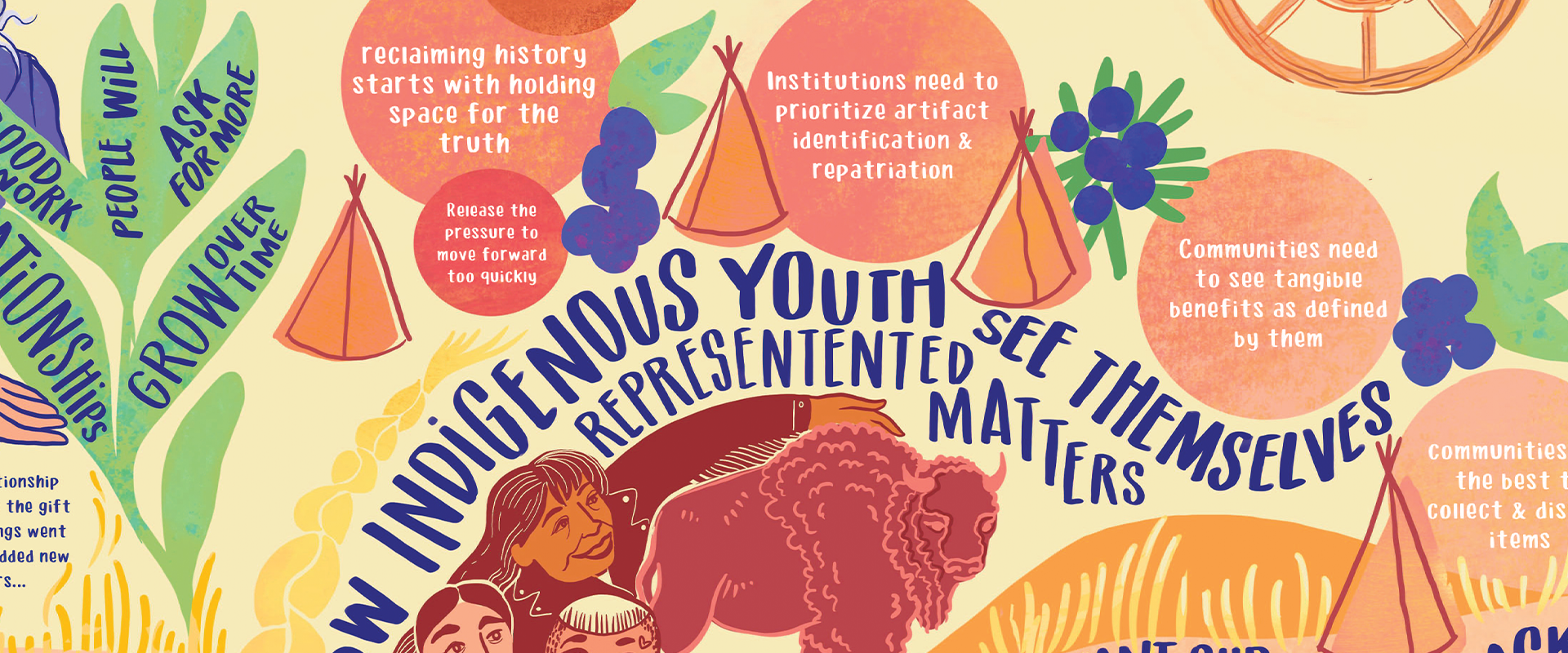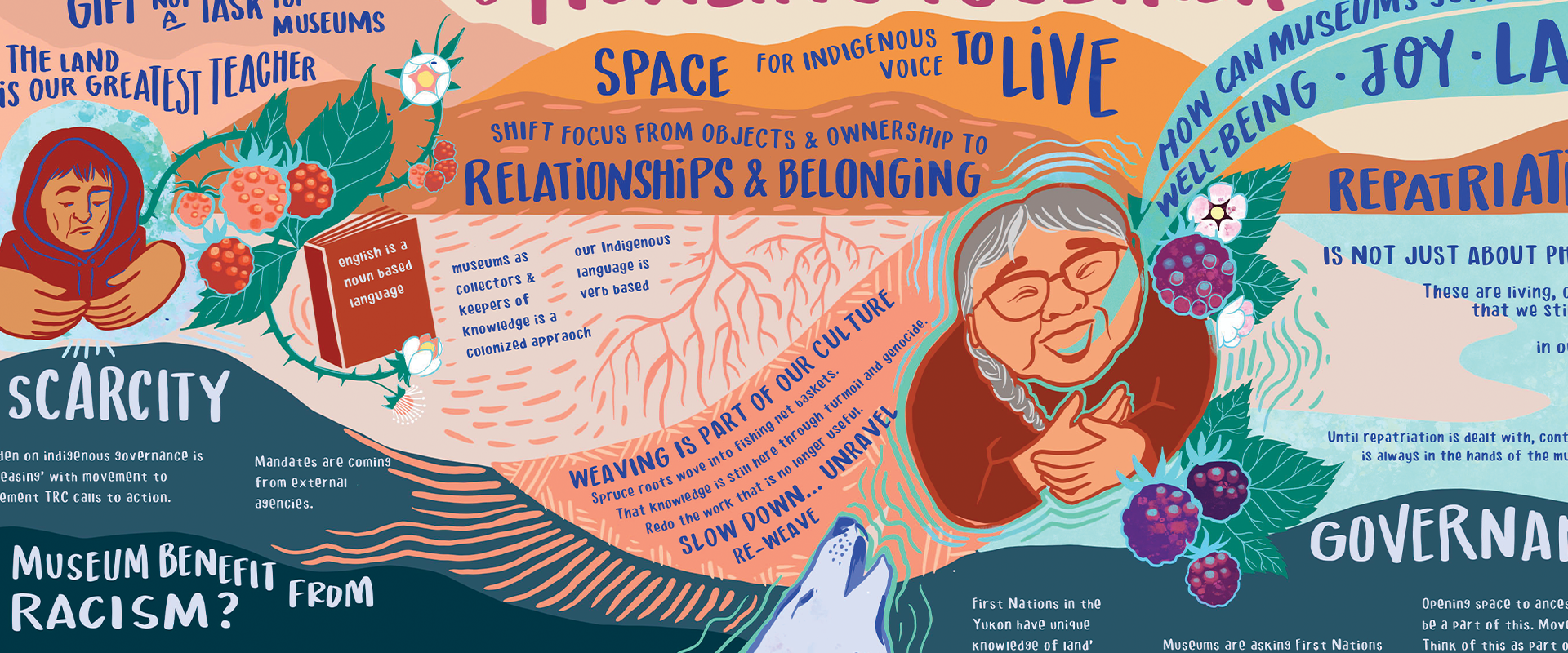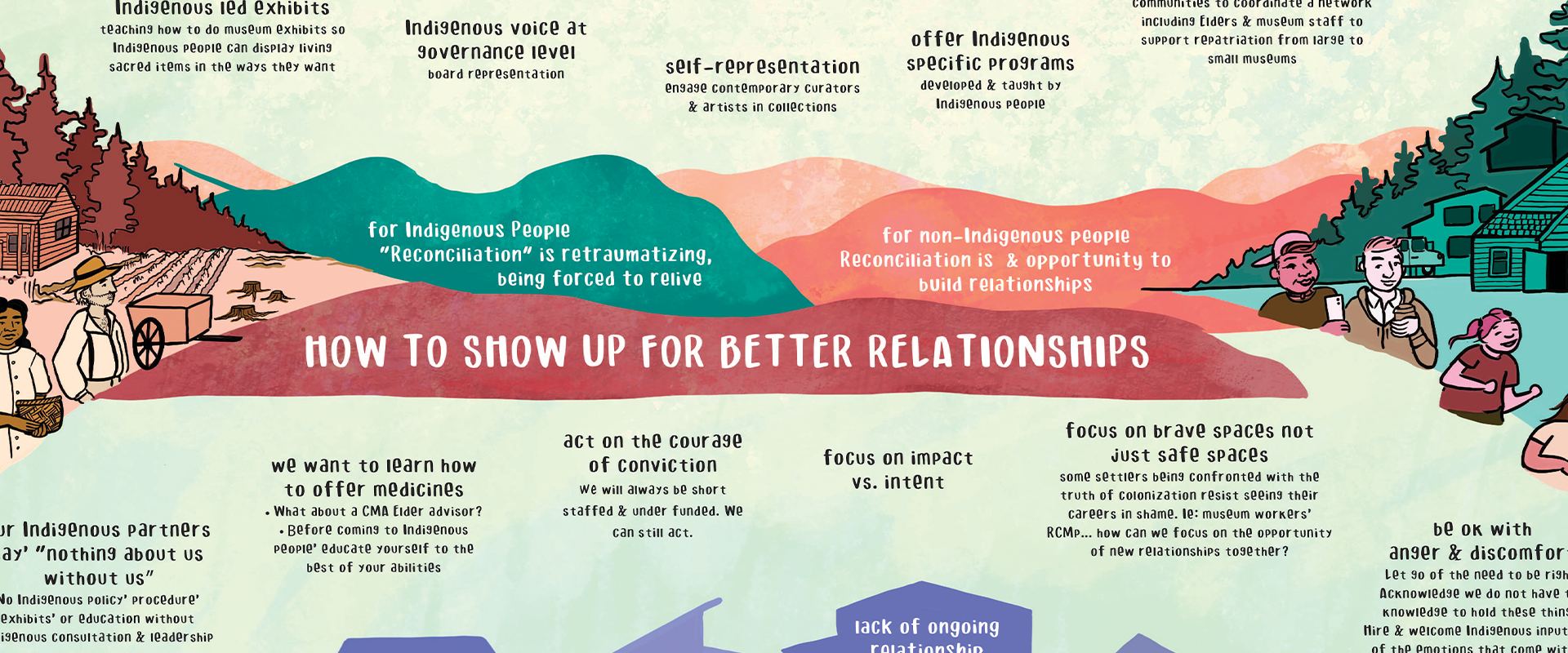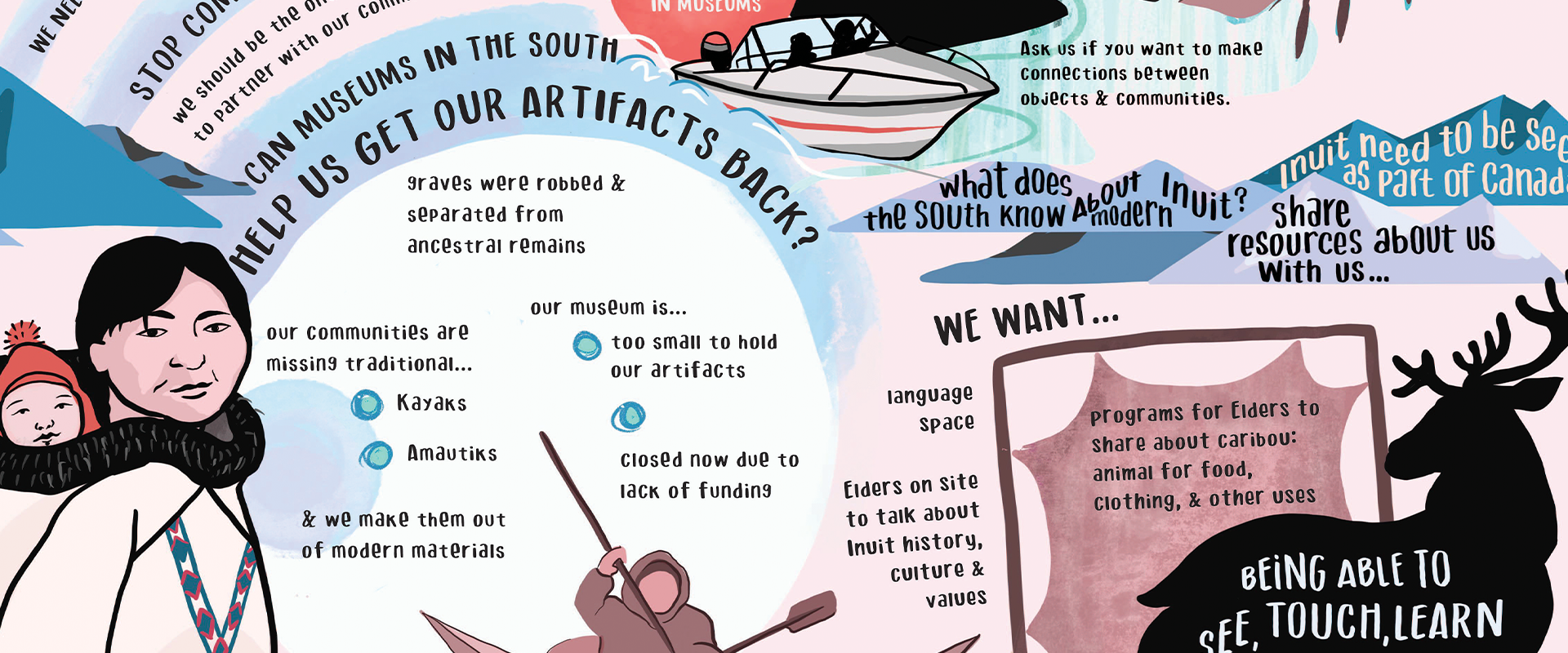
Moved to action: Resources
As part of this report, the CMA has created and identified helpful resources to support museums in their decolonizing efforts.
Moved to Action Resources
NEW - Moved to Action Web Course
January 17th – March 12th, 2024
This eight module web course series is designed to establish a new national baseline for museums and heritage professionals seeking to support Indigenous self-determination.
Printable Downloads
Standards for Museums - An 11x17" printable featuring all 30 Moved to Action standards.
Timeline: Indigenous Peoples Day - A 2-page printable featuring the history behind Indigenous Peoples Day.
Quick Reference Guides
More Than Giving Back
This quick reference guide provides additional information and resources to support repatriation and collections management practices.
Becoming Better Employers
This quick reference guide provides additional information and resources for museum administrators and HR professionals.
Small Museums Handbook
This concise but comprehensive handbook considers small museum approaches, strengths and unique challenges in a scaled-down review of the report content.
Self-facilitated Sessions
Building an Engagement Strategy from the Inside Out
This self-serve facilitated session will help museum teams prepare, plan and carry out a community engagement strategy.
Building an Engagement Stratefy from the Inside Out Session Slides (PPT)
Reassessing Your Governance
This self-serve facilitated discussion will help museum executives and board members build their awareness of UNDRIP and its relationship to museum governance and help build UNDRIP into your strategic planning process.
Visual Notes
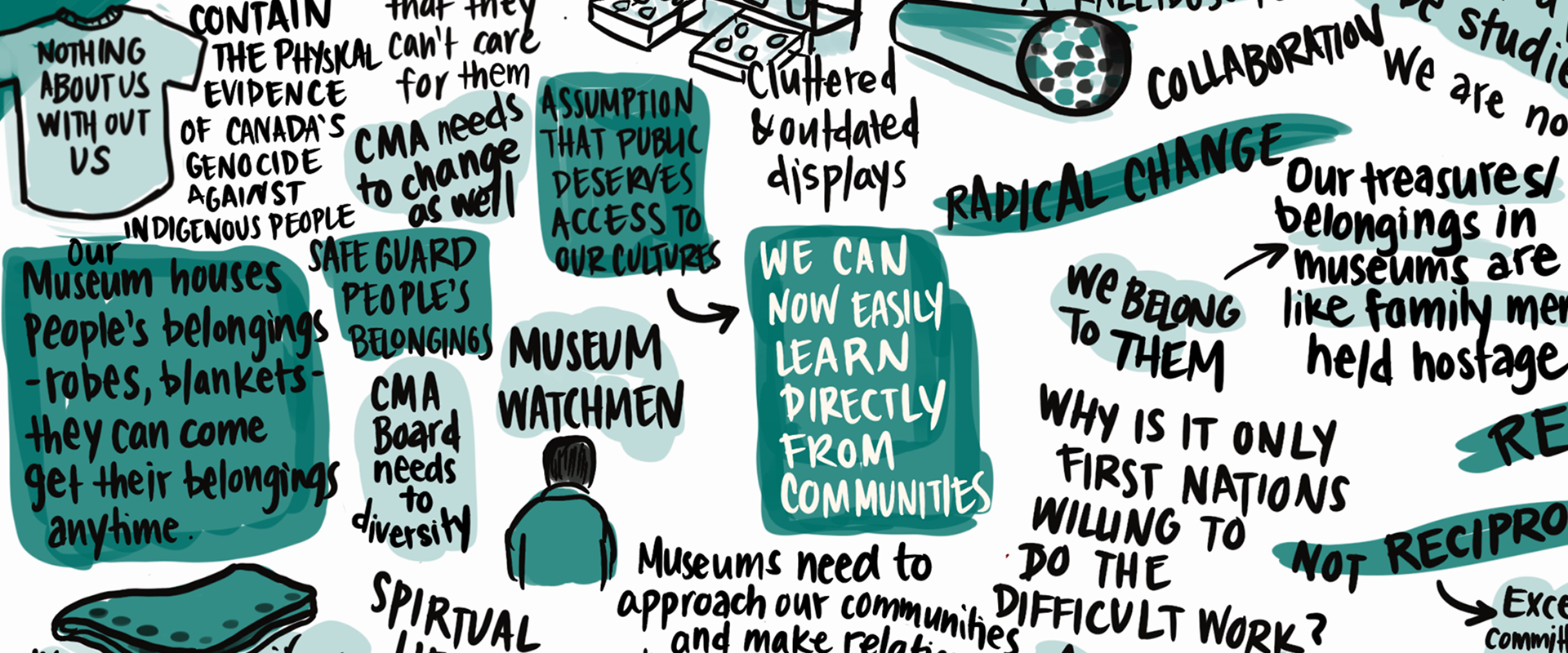
Saahlinda Naay (Haida Gwaii Museum)
February 8, 2021
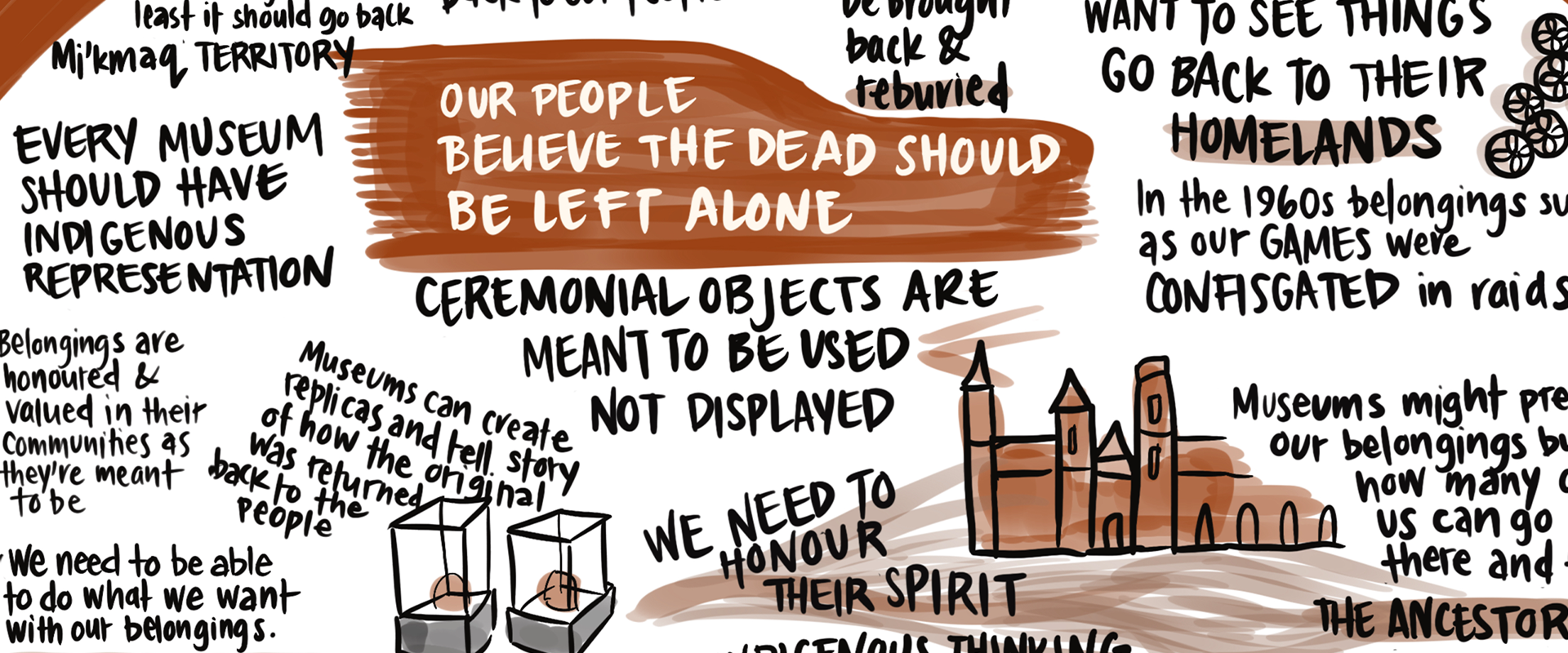
Membertou Heritage Park
March 2, 2021
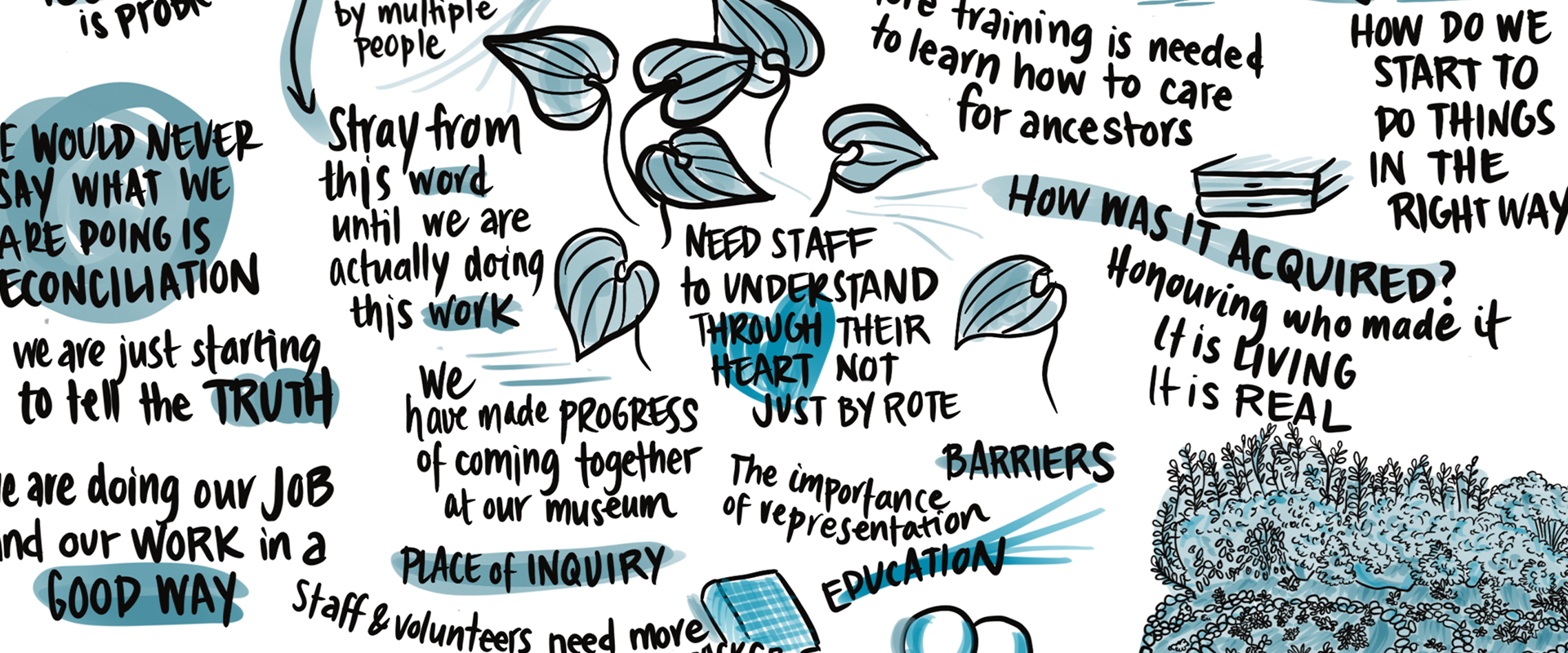
Burnaby Village Museum
March 12, 2021
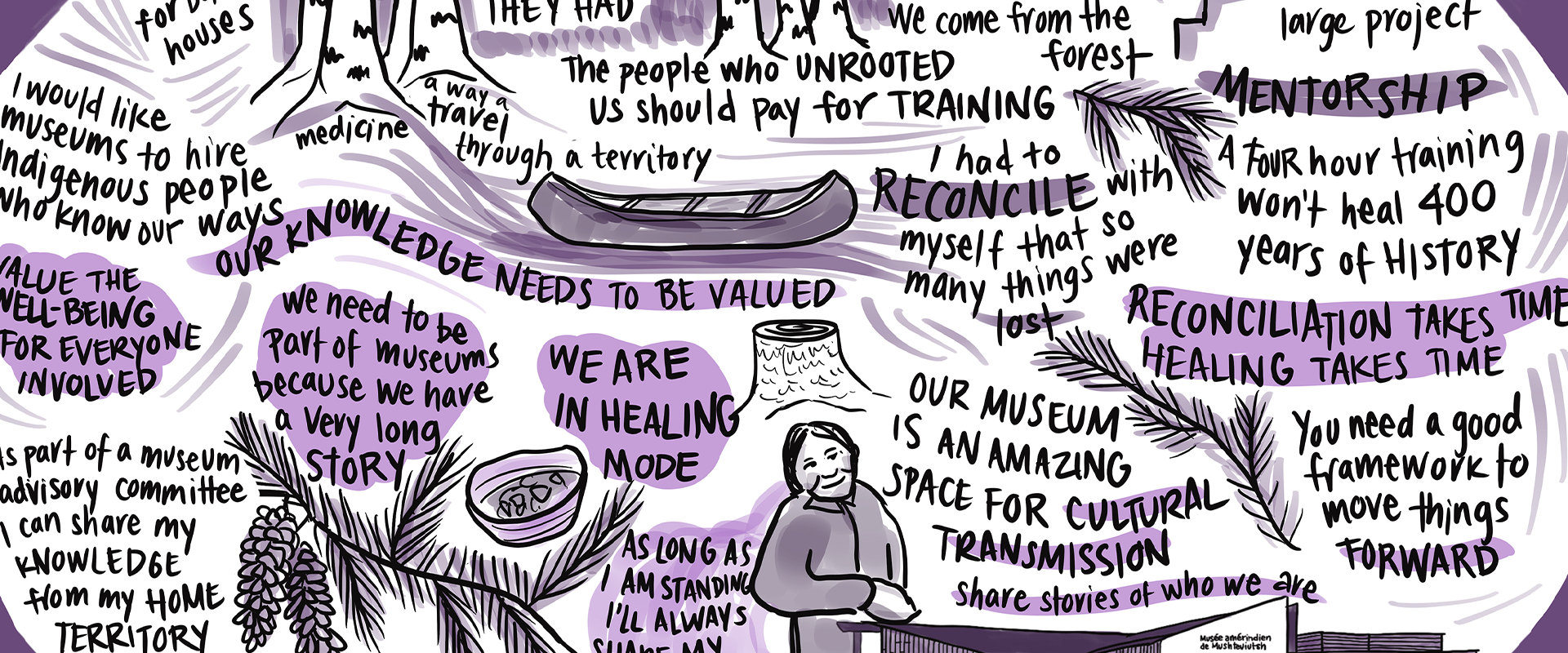
Musée amérindien de Mashteuiatsh
March 18, 2021
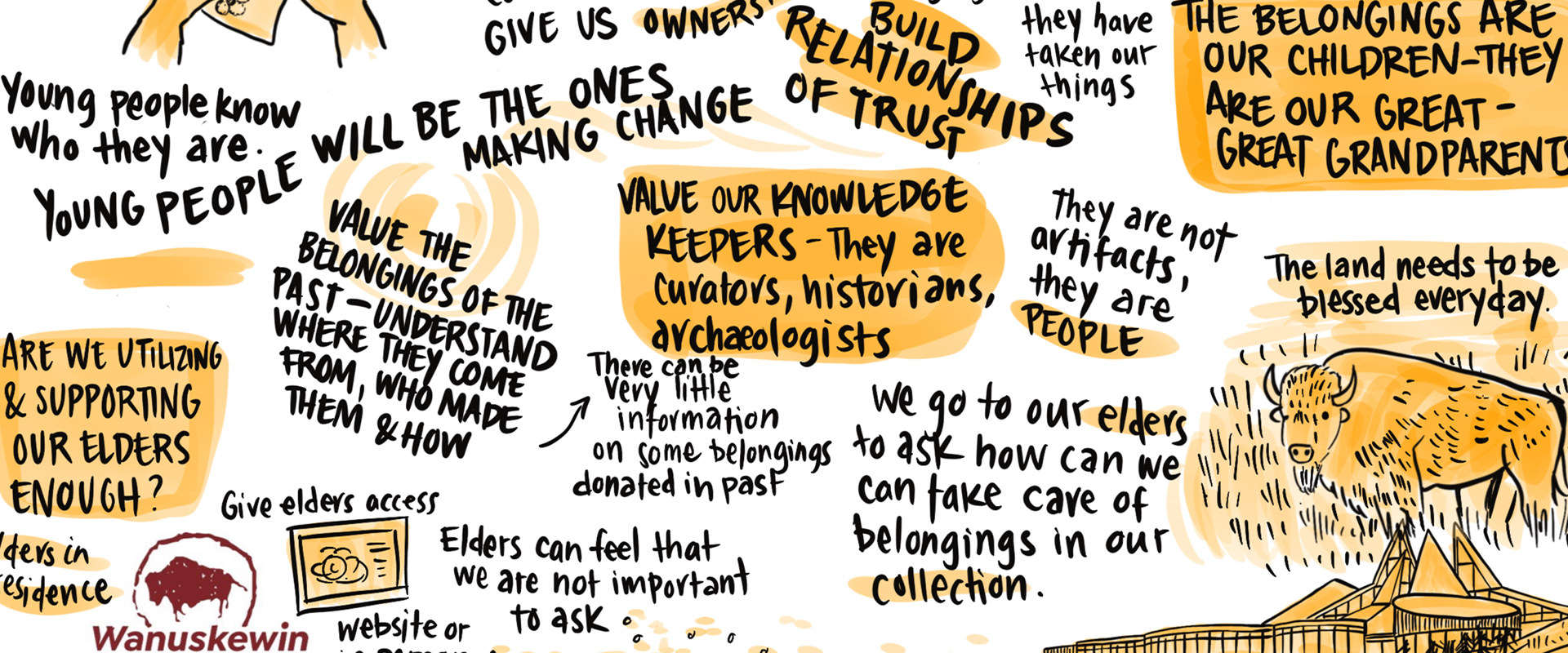
Wanuskewin Heritage Park
March 22, 2021
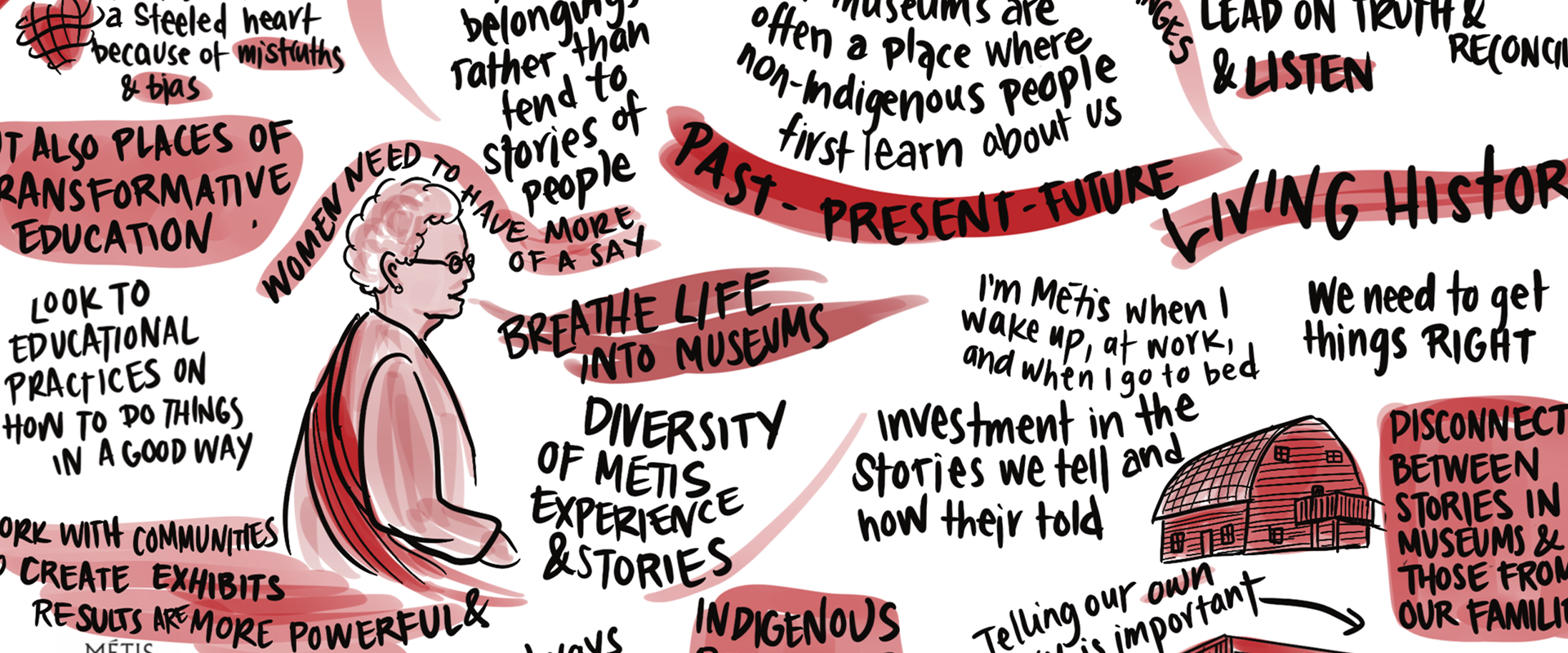
Métis Crossing
March 23, 2021
Recommended Resources
UNDRIP and Indigenous Heritage
Written by Catherine Bell and Melissa Erickson, this resource is essential reading to gain a general understanding of UNDRIP and understand the application of UNDRIP to Indigenous Heritage and museums.
Foundational Documents:
- Truth and Reconciliation Commission of Canada: Calls to Action
- Honouring the Truth, Reconciling for the Future: Summary of the final report of the Truth and Reconciliation of Canada.
- National Centre for Truth and Reconciliation
- United Nations Declaration on the Rights of Indigenous Peoples
- CMA/AFN Task Force Report on Museums and First Peoples (1994) (3rd edition, 1994)
Key Terms
More terms are coming soon, a number of terms relevant to the report are listed in Section 10, Glossary of Terms and Resources Consulted.
Truth and Reconciliation Commission
United Nations Declaration on the Rights of Indigenous Peoples
Call to Action #68
“We all upon the federal government, in collaboration with Aboriginal Peoples, and the Canadian Museums Association to mark the 150th anniversary of Canadian Confederation in 2017 by establishing a dedicated national funding program for commemoration projects on the theme of reconciliation.”
Call to Action #68, Truth and Reconciliation Commission Report
Call to Action #68 is included alongside other Calls to Action that relate to cultural heritage.
Whether #68 has been delivered does not have consensus. Of the four main groups reporting on the completion of Calls to Action, affirmation is split.
The Canadian Federal Government and the not-for-profit, Indigenous-led group Indigenous Watchdog affirm that it is considered complete.
However, concerns around the delivery of funds related to Canada 150 draw into question whether this Call to Action truly met the intention set out by the Truth and Reconciliation Commission. Both the CBC Beyond 94 project and the Yellowhead Institute consider #68 to be incomplete, citing that the funding project was “not in collaboration with Indigenous Peoples and not exclusively to fund projects on the theme of reconciliation.” (CBC News, Beyond 94, Call to Action #68)
It should be noted that the Canadian Museums Association was not invited to collaborate on the project or the delivery of this Call to Action as was requested.
Truth and Reconciliation Commission
Funded by the Indian Residential Schools Settlement Agreement (2006), the Truth and Reconciliation Commission was established to acknowledge and provide a witness to Residential School experiences.
The Commission heard from over 6,500 witnesses and survivors, creating a historical record now housed by the National Centre for Truth and Reconciliation in Manitoba. As part of its comprehensive final report, 94 Calls to Action were issued to further the aims of reconciliation.
To date, definitive consensus between four reporting organizations indicates that only five are complete. Individual organizational assessments range with 11 considered completed by the Yellowhead Institute and Indigenous Watchdog, 13 considered completed by CBC Beyond 94 and 17 considered complete by the Federal Government.
Call to Action #67
“We call upon the federal government to provide full funding to the Canadian Museums Association to undertake, in collaboration with Aboriginal peoples, a national review of museum policies and best practices to determine the level of compliance with the United Nations Declaration on the Rights of Indigenous Peoples and to make recommendations.” (Call to Action #68, Truth and Reconciliation Commission Report)
Call to Action #67 is one of two Calls to Action that specifically mentions the Canadian Museums Association. In 2018, the Department of Canadian Heritage granted the CMA $680,948 to produce the report and recommendations along with a toolkit to support the implementation of UNDRIP within Canadian museums.
This resulted in the production of Moved to Action: Activating UNDRIP in Canadian Museums, published in 2022.
United Nations Declaration on the Rights of Indigenous Peoples
The United Nations Declaration on the Rights of Indigenous Peoples (UNDRIP) is a comprehensive international instrument on the rights of Indigenous peoples. It establishes a universal framework of minimum standards for the survival, dignity and well-being of the Indigenous peoples of the world. It also elaborates on existing human rights standards and fundamental freedoms as they apply to the specific situation of Indigenous peoples.
UNDRIP is the principal framework upon which the Truth and Reconciliation Commission (TRC) Calls to Action are based. The Calls to Action by the TRC are aimed at a range of institutions, laws and programs affecting Indigenous peoples; and legislation aimed at its implementation. UNDRIP is an expansive declaration consisting of 46 Articles. Because it is a declaration and not an international treaty or convention, it is viewed by State signatories as aspirational until implemented through national law, although some scholars debate this.
The United Nations Declaration on the Rights of Indigenous Peoples (UNDRIP) was adopted by the General Assembly on Thursday, 13 September 2007, by a majority of 144 states in favour, 4 votes against, including Canada. Canada’s stated reason for opposing the declaration was that it lacked clear guidance for implementation and conflicted with the existing Canadian Charter of Rights and Freedoms, which the government believed already protected the rights of Indigenous people.
In the intermediary period, UNDRIP received increasing support at the federal level, and was adopted by one province, British Columbia, in 2019, through the Declaration on the Rights of Indigenous Peoples Act.
In December 2020, the federal government introduced Bill C-15, The United Nations Declaration on the Rights of Indigenous Peoples Act, which received Royal Assent in June, 2021. Bill C-15 requires the federal government to prepare an action plan to achieve the objectives of UNDRIP by June 21, 2023.
